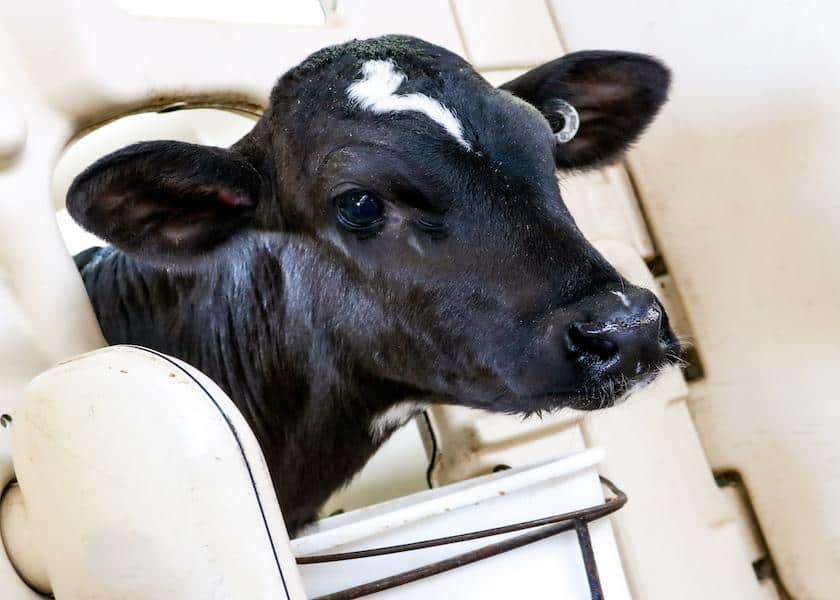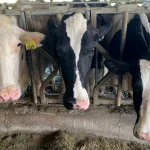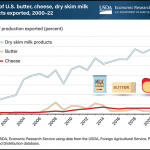
Feeding waste milk to preweaned calves is a practice often promoted as a cost-effective and efficient way to utilize a surplus resource.
But Robert James, calf consultant and Virginia Tech University Professor Emeritus from Blacksburg, Va., cautioned that waste milk is not necessarily the “free lunch” it is often perceived to be, and may actually be a quite hazardous and costly liquid ration option. He pointed out:
- Waste milk is not entirely “free” — “There is a cost to producing milk, regardless if it is sold or used as calf feed,” James noted. In a number of field studies conducted in his own research and with his students, he found that healthy, well-managed herds should only have enough hospital milk to feed approximately 30-50% of their calf population. If a dairy has more supply than that, it is likely experiencing costly herd-health challenges that need to be addressed. That waste milk supply also varies greatly, meaning calf diets may have to be supplemented with salable milk to meet day-to-day demands.
- Consistency is a concern — In a study on a 2,500-cow California dairy, James and his team tested waste milk 5 times per week over 3 months. They found a range in solids content from 9 to 13% — which would make a highly inconsistent diet for baby calves. Attempts to supplement the variation in supply and solids levels led to undesirable complexity in the feeding program.
- Antibiotics are a risky element — “As global concern mounts regarding the prudent use of antibiotics in animal agriculture, it’s not a good look for young calves to be receiving unknown quantities of antibiotics in hospital milk,” James noted. Antibiotic residues are not erased by pasteurization, and it is unknown what effect feeding them to calves can have on gut flora or the development of resistant pathogens. James pointed out that for these reasons, plus the potentially negative perceptions of consumers, it is illegal to feed waste milk to calves in countries the United Kingdom and European Union.
- Pasteurization is not perfect – James said pasteurization is a must for farms feeding waste milk, but it’s also a practice that can create a false sense of security. At its best, pasteurization only kills 90% of the bacterial organisms present, and many on-farm pasteurization programs suffer from inconsistent protocols, rotating workers, and improper handling of the milk before and/or after pasteurization. Mycoplasma, salmonella, and Johne’s disease all involve vertically transmitted pathogens that can be passed on from adult cows to calves via milk, and wreak serious havoc in preweaned calf programs.
- Transition milk management is changing waste milk – Many dairies are embracing the merits of feeding transition milk to their youngest calves, and developing specialized protocols to harvest and feed second- and third-milking milk. James applauded that shift, but at the same time noted it will affect the quality and quantity of waste milk available for older calves. “As transition milk is pulled out of the ‘pot milk,’ that leaves just true hospital milk from sick cows – including the accompanying bacteria and antibiotics – as the waste-milk supply,” he noted.
James said the nature of calf rearing in the United States is changing the focus of calf nutrition. “Calves are no longer viewed as a low-value, surplus commodity,” he declared. “On the replacement heifer side, we now know that well-nourished calves mature into better cows. And with the recent explosion of beef-on-dairy breeding, those calves also are highly sought after and more profitable with optimal nutrition. Now more than ever, we can ill afford mistakes in our calf-feeding programs.”
Because high-quality milk replacer is extremely consistent nutritionally and essentially sterile, James said it is the preferred liquid feed source for preweaned calves, and can promote calf performance equal to that of whole milk. He suggested dairies wishing to still utilize waste milk should handle it with the same vigilance as salable milk.
That includes proper chilling and daily monitoring of pasteurization protocols. He also advised feeding waste milk only to calves at the older end of the age spectrum in the preweaning phase, and using powdered supplements to ensure adequate solids content.

























